No products in the cart.
Idaho and the Airplane
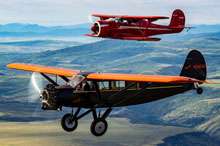
Adventures in Aviation
By Crista Videriksen Worthy
We descended deep into the canyon of the main Salmon River in our red Cessna 210 and scanned ahead for the Wilson Bar airstrip. Mountains on both sides rose more than a mile above our heads. The river was fewer than two hundred feet below. My husband Fred and I knew the strip lay just around a corner but which one? Suddenly, there it was to our right—and we were too high. In a situation like this, you have only a moment to make a decision that can end your life—or not. The Wilson Bar airstrip is only fifteen hundred feet long and there’s a mountain at the end of it. Once you try to land, there are no second chances.
No way would we land this time. As our hearts pounded, I called out, “Go around!” and Fred, who was at the throttle on that flight, smoothly added power. We continued straight ahead, reduced flaps, raised the gear, and climbed up out of the canyon for another try. Next time around, we were lower and slower. Our Short Takeoff and Landing (STOL) mods allowed the big six-seat plane to fly at a little over forty knots without stalling. As the canyon narrowed, the trees on either side of the river seemed to reach out for our wings. A group of rafters below waved at us. And then the airstrip appeared again, but now we were ready. This time we turned right, dragging the plane in with power, and set it down. When we cut the engine, the plane slowed so quickly that we used less than half the runway. What a rush! We laughed the nervous, excited laugh that bubbles over you at the thrill of just being alive.
We parked beside the only other airplane, a Cessna 206. The pilot walked over. “Nice landing,” he grunted.
“That was our first-ever backcountry landing!” I exclaimed.
“Real nice landing then, especially for such a big plane,” he responded.
I could see he was upset. While it was still early on this morning in August 2001, the minutes were ticking by and it soon would be hot. His passengers were late and he had many more backcountry pickups and deliveries to make before noon, when the air would thin, the winds would kick up, and he would want to be on the ground.
Finally, a group of teenagers rambled onto the runway from behind the trees. He grabbed their bags and threw them into his plane with such force that it rocked back and forth. “Let’s go, you’re late!” They got in, buckled up, and he taxied all the way to the end of the strip. Holding the brakes, he powered up and then barreled down the runway, lifted off, and headed upstream.
And then we were alone.
We frolicked in the Salmon River, hiked among the trees, and camped beside the rapids. It was one of the best days of my life.
Tim Riley flies the final approach to Wilson Bar. Janette Riley photo.

Fred Zimmerly (second from right) and a mining party at Mackay Bar, 1935. Bert Zimmerly, Jr. photo.

An Air Tractor 802F makes a drop on an Idaho wildfire. Air Tractor photo.
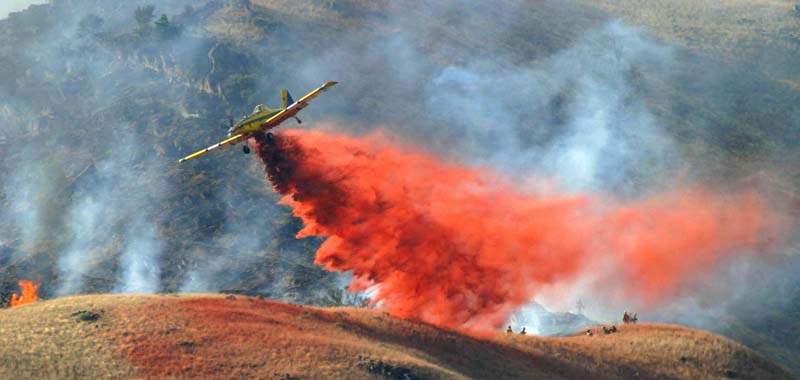
Idaho Fish & Game relocate beavers to Chamberlain Basin, 1948. Idaho Fish & Game photo.

Bob Hoff’s 1939 “Staggerwing” biplane and Hank Galpin’s 1928 Beechcraft . Thomas Hoff photo.
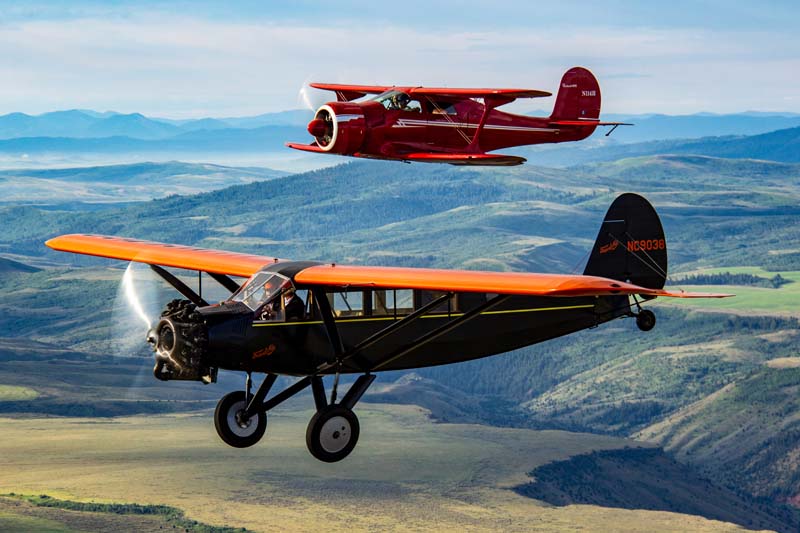
Ben Scott's 1930 Stearman 4E over the Sawtooth Range. Thomas Hoff photo.
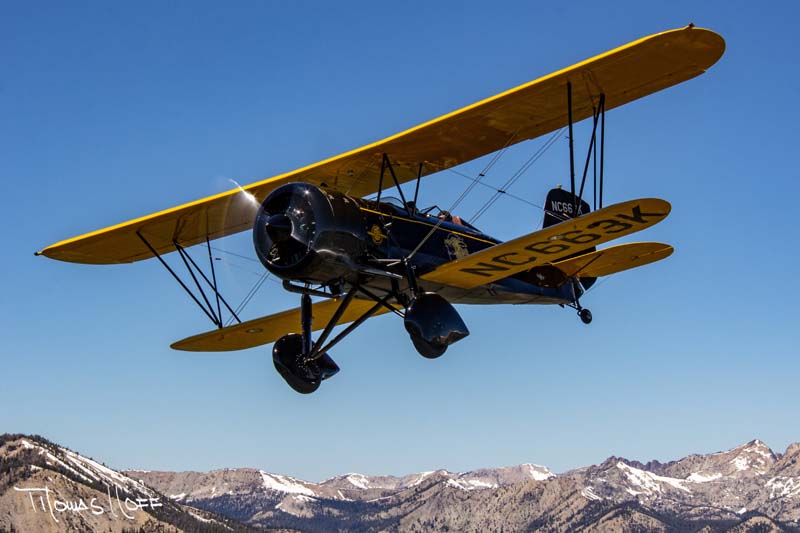
Jim Davies departs a private ranch near Atlanta. Crista Worthy photo.
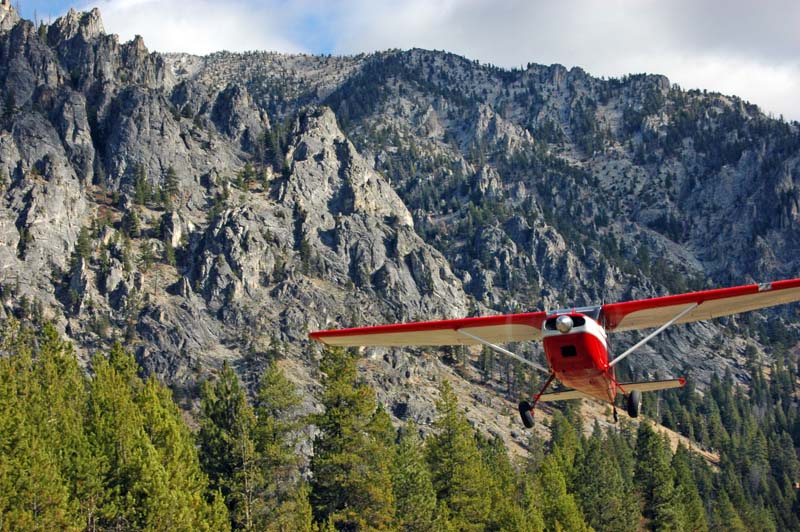
Over George Dewey Moore Airstrip at Big Creek. Kirk LeDoux photo.

Cover of the author's new book.
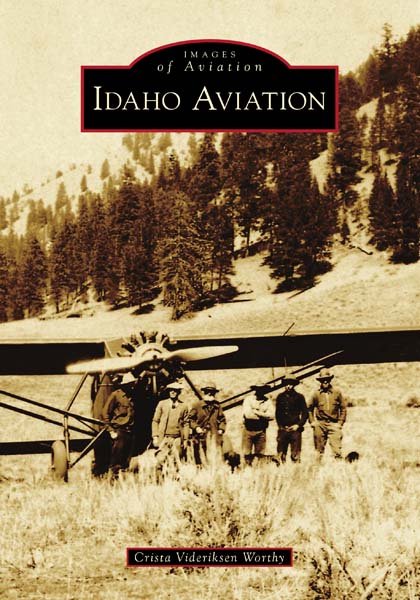
Jim Larkin rescues horses trapped in a blizzard at Morgan Ranch,1956. Bev Larkin photo.

Petra Videriksen tries on the pilot’s headphones. Crista Worthy photo.
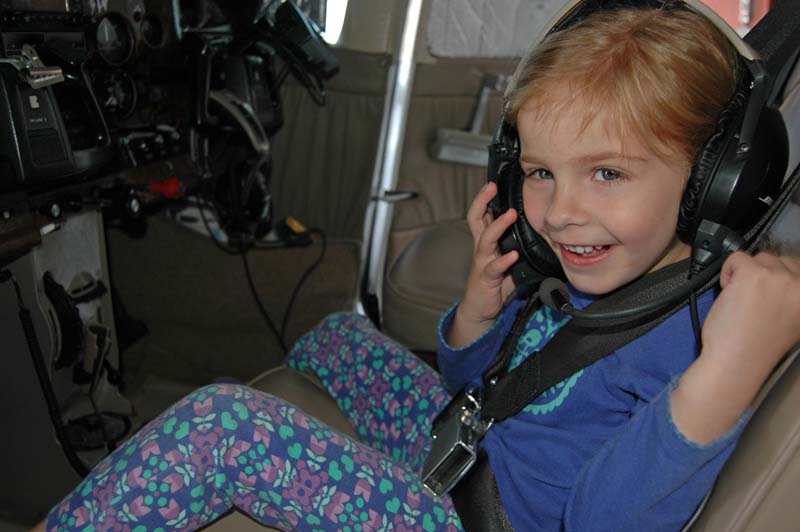
Clint Anderson’s Skywagon at Johnson Creek. Clint Anderson photo.

Final approach to the USFS Fish Lake Airfield. Chris Aasen photo.

A cow moose investigates the author’s tent at Fish Lake, 2001. Crista Worthy photo.
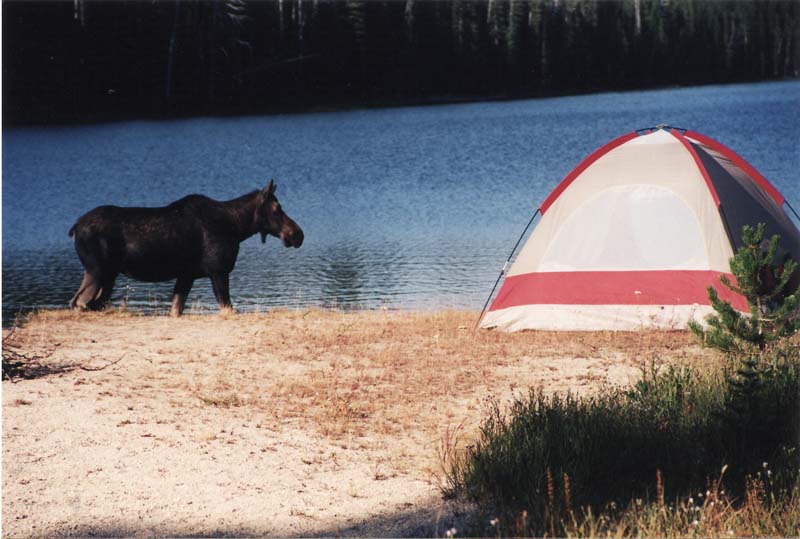
Bob and Jane Hoff fly over a ranch on the Middle Fork of the Salmon. Thomas Hoff photo.

The following morning, we departed at the crack of dawn and headed to Johnson Creek, Idaho’s most popular airstrip. There I watched as a few exhausted Chinook salmon as they spawned in the shallows. These yard-long fish had fought their way up the Columbia River, the Snake River, and the Salmon River to their birthplace in Johnson Creek. They had passed eight huge dams, swum more than nine hundred miles, and climbed more than a mile above sea level. As I watched them complete their life cycle, I wept.
On our last day, we flew to Fish Lake, a tiny, shallow lake in the Selway-Bitterroot Wilderness not far from Lolo Pass. We spent the day spying on numerous cow moose and their calves as they fed in the lake. Each time a cow would put her head underwater, we’d creep a bit closer and hide behind a tree. That day may just be the happiest day of my life. The next morning, there were moose prints just outside our tent, literally three inches from where our heads lay inside the tent. The moose had walked all around us at night.
How did we find these places? Blessed with nearly one hundred pristine wilderness airstrips within easy reach of civilization, Idaho is the premier destination for recreational pilots from every corner of the planet. But we lived in southern California and had never heard of them until the spring of 2001, when I read about the Idaho Aviation Association (IAA) in Pilot Getaways magazine. IAA President Kathy Miller explained how the organization protected Idaho’s irreplaceable wilderness airstrips. I bought a membership that day. She also mentioned a book, Fly Idaho!, filled with photos and information about these airstrips. I ordered a copy. When it arrived, I could barely contain myself.
“Look at all these places we can fly!” I exclaimed.
“Well, why don’t you pick three, and we’ll go there this summer?” said Fred.
And that’s how we came to Idaho for the first time, in August 2001. In subsequent years we made more trips, with and without our three children. We visited Coeur d’Alene, flew into the Silverwood Airport (now closed) to play in the amusement park, and landed at Elk City for huckleberry ice cream. We dropped into the Cavanaugh Bay and Priest Lake airstrips and hiked around beautiful Priest Lake.
In 2006 I began working at Pilot Getaways magazine as an editor and writer, and eventually became its managing editor. The magazine, which suspended publication in 2018, specialized in travel articles for pilots. As we flew around the country, landing in small towns and big cities, we savored the endless variety of climate, scenery, food, and customs of people across America. But we love the West’s wildlands, and Idaho had gotten under our skin. Nowhere else can you reach so much wilderness so easily if you have a small airplane. Alaska has more wild country but the distances are vast and the weather is often bad. Our plane could take us from southern California to Boise in five hours. If you live in Idaho, you can fly to a wilderness airstrip on your lunch hour. Or fly out for some early morning fishing and be back for lunch.
In 2008 disaster struck when the Great Recession took our business, our home, and our airplane. But in 2010, Fly Idaho! author Galen Hanselman invited us to his home in Hailey and flew us around for week. He dropped us off at some of Idaho’s iconic fly-in guest ranches, such as Sulphur Creek, Big Creek, B-Bar-C, Wapiti Meadows, and the Flying B, so I could write articles about them. The hardy folks who live and work at these wilderness ranches depend on aviation to bring in food, supplies, and guests. In 2011, looking for a fresh start, we moved to Idaho, and I became editor of The Flyline, the monthly publication of the Idaho Aviation Association.
As we explored Idaho, it became clear what a unique place it is and how indispensable aviation is to so many aspects of life here. Idaho’s largest cities all lie near its borders, because the entire central portion of the state is a batholith, essentially a giant hunk of granite thrust two miles into the sky by tectonic forces and then deeply eroded by rushing rivers and ice. To this day, there are few roads. Long ago, people began flying over the mountains to get around.
About a hundred years ago, Nick Mamer made the first-known Idaho backcountry landing when he flew from Spokane to an open field in the Chamberlain Basin near William Stonebraker’s homestead. Soon, Nick was flying hunters and fishermen into the ranch, where William ran a guiding service. Mining operators learned that ski-equipped airplanes could fly supplies in during winter, when trails were impassable.
By the 1930s, the Forest Service was building airstrips deep in the wilderness as emergency landing sites to service ranger stations and to deploy ground-based wildland firefighters. Smokejumping was invented in Idaho, too. At 3 p.m. on July 12, 1940, jumpers Earl Cooley and Rufus Robinson departed Moose Creek in a Johnson Flying Service Travel Air. As pilot Dick Johnson fought to control the aircraft in the afternoon turbulence, Rufus jumped, followed by Earl, whose lines tangled. His World War II surplus parachute nearly failed to open but he landed safely. During a downdraft, cargo kicker Merle Lundrigan’s foot got tangled in ropes and he was pulled outside the aircraft, barely hanging on to the doorstep. Dick banked hard, tossing Merle back aboard. From then on, cargo kickers wore parachutes, and a safety bar was placed across the door. In a 1974 interview with the New York Times, Earl Cooley said, “Our training consisted of a man saying, ‘This is your parachute. You know what fire is. We jump tomorrow.’”
Idaho has a way of weeding out bad pilots. They crash. Most Idaho pilots know at least one other pilot who has died in a plane crash. At the same time, Idaho has a way of forging some of the best pilots in the world. “Best” means more than just skillful. It also means knowing your airplane’s capabilities, knowing the terrain, recognizing when conditions are not safe, and turning around.
The pilots who drop water or fire retardant on huge wildfires work in conditions that are hard to imagine. Visibility is severely reduced by smoke. Heat-induced turbulence is bone-jarring, exacerbated by the steep terrains of mountains and canyons. The weight of the aircraft shifts dramatically as the load is dropped onto the flames. Idaho pilots also fly scientists and personnel from the US Forest Service or Idaho Fish and Game in difficult conditions as they survey wildlife, stock fish, and much more.
Idaho is an agricultural state, and crop-dusting is one of the most demanding forms of aviation. My friend Bob Hoff, who owns a farm near Idaho Falls, once took me for a thrill ride in his beautiful red Staggerwing biplane (that was another one of my happiest days). His brother Dick was an ag pilot and Bob told me, “Dick was what many of us call a natural. Never could leave an airplane right side up. To watch him spray with his Ag Cat was an airshow in itself. He flew it until retirement and never had an accident.”
April 6, 1926, is considered the start of commercial aviation in the U.S. That’s the day a tiny Varney Air Lines plane, loaded with mail, landed at the newly cleared Boise Airport (where Boise State’s stadium is now). The U.S. government wanted faster mail service, so it contracted with private companies to fly the mail via standardized routes. Airline contractors received eighty percent of the revenue generated by the mail they carried, giving them the capital and incentive to maintain and expand their services. Had the first airline companies been forced to rely on paying passengers for income, none would have survived. Varney Air Lines, based in Boise, eventually became United Airlines.
Air mail pilots were lauded as heroes, but perhaps no pilots captured the imagination the way “bush pilots” did. The lore of the 19th Century “mountain man” evolved into the lore of the 20th century “bush pilot.” Often glamorized in magazines, he would fly where no others could. And when his airplane failed him, he set it down on a postage-stamp-sized riverbank and forged his way out on foot, even through the snow. Sometimes pilots would return later, disassemble their aircraft, and float the pieces down the river, to be repaired and reassembled in a flat area and then flown out.
It’s hard for anyone alive today to imagine how difficult it must have been during the first part of the 20th Century to build a wilderness home from scratch, grow enough food to avoid starvation, and stay warm in winter. That’s why so many early Idaho ranches had airstrips: homesteaders walked tractors or bulldozers in from the nearest road, often many miles away, to clear enough space—a lifeline— so a skilled pilot could land a tiny airplane with food, supplies, and mail. Aviation brought just enough contact with the outside world to make backcountry life possible.
In 2013, I traveled to Alaska to earn a seaplane rating. Flying a float-equipped Super Cub and landing on tiny lakes in the Chugach Mountains, I saw how vital aviation is to Alaska’s economy, flying tourists and fishermen in and out of remote areas, and serving as basic transportation for locals who live far from any road. Idaho is the same way, only condensed. The people who live, work, and recreate in Idaho’s central wilderness areas depend on Idaho’s remote airstrips. The member-supported IAA works with federal, state, and local government officials as well as private landowners to maintain existing airstrips in safe condition. IAA volunteers help with a lot of the work, as government budgets are tight.
In the past, there has been pressure from the Forest Service or conservation groups to cease maintenance on, and eventually close, some of Idaho’s airstrips. But language in the 1980 Central Idaho Wilderness Act clearly prohibits this. When Arcadia Publishing approached me with the idea of writing a book about Idaho’s aviation history, I realized that many Idahoans, even many pilots, aren’t familiar with many of the subjects I’ve barely touched on here. I wrote Idaho Aviation so people could see how unique our aviation history is, and how unique Idaho aviation still is today.
I interviewed relatives of many of Idaho’s legendary pioneering pilots and discovered amazing stories and photos. People like Rod Snider, who, on August 5, 1961, saved twenty smokejumpers by repeatedly descending straight through smoke and burning trees, loading four men onto his tiny helicopter (two inside and two holding onto the skids) and then powering straight up to get them out. Idaho’s backcountry pilots have flown in ponies, llamas, chickens, cows, pianos, even bridges, all jammed into, and sometimes sticking out of, tiny airplanes. Pilots have looked over their shoulders at anesthetized horses, mountain lions, and even grizzlies, fervently hoping they wouldn’t wake up before the plane was safely on the ground. Other Idaho pilots trained literally thousands of cadets, seven days a week and in all weather, to help win World War II. The cast of characters, and their stories of ingenuity and bravery, vastly outnumbered the pages I had to fit them all in, but I did manage to include 277 photos so readers could see what people can accomplish when they set their minds to it.
One summer day in 2005, on a British Airways flight from London to Chicago, I was invited to visit with the captain in the Boeing 747’s cockpit (after we landed). I was still living in California at the time, but I had visited Idaho. As we chatted, he said in his delightful British accent, “You know what my favorite thing is, in all of aviation? Sometimes I’ll take a week off, airline to Boise, and rent a little Cessna. Then I fly to Johnson Creek, set up a tent, camp under the wing, and fish and hike. Idaho is the most amazing place I’ve ever flown in my life.”
The author’s new book, Idaho Aviation (Arcadia Publishing, 2021) is available locally wherever books are sold and on arcadiapublishing.com. Signed copies are available at IdahoAviation.com/store, where a purchase there supports the IAA.
This content is available for purchase. Please select from available options.
Register & Purchase Purchase Only
Register & Purchase Purchase Only



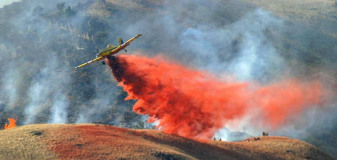

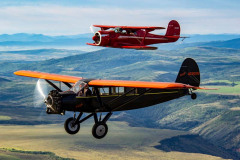
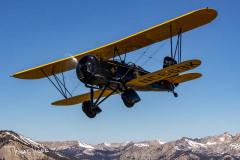
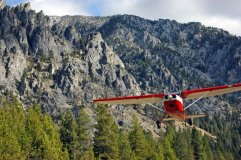

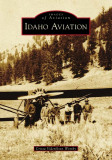
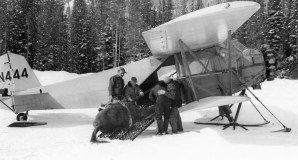
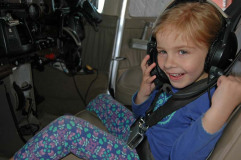
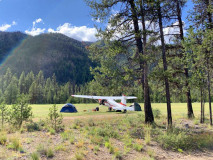

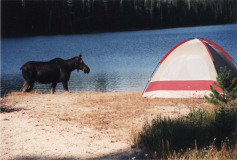
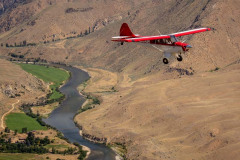
Comments are closed.